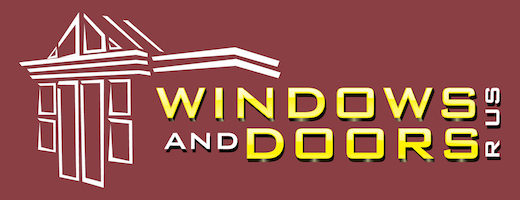




Veta Fiorillo
Understanding UPVC Windows and Doors: The Ultimate Guide
In recent years, the appeal of UPVC (unplasticized polyvinyl chloride) windows and doors has risen, and for good reason. These products offer a perfect blend of efficiency, design, and durability, making them a perfect option for house owners and home builders alike. This post dives into the various aspects of UPVC windows and doors, exploring their benefits, costs, maintenance, and frequently asked questions.
What is UPVC?
UPVC is a kind of plastic that is commonly utilized in the construction industry, particularly for window upvc door and door frames. Unlike routine PVC, UPVC does not consist of plasticizers, which makes it stiff and suitable for structural applications. The product is resistant to moisture and ecological degradation, giving it a longer lifespan compared to standard materials like wood and metal.
Advantages of UPVC Windows and Doors
Sturdiness: UPVC is extremely resistant to rot, deterioration, and fading, making it an exceptional choice for climates with severe climate condition.
Energy Efficiency: UPVC frames can assist enhance the energy effectiveness of homes. They are excellent insulators, which means they can help reduce heating & cooling expenses.
Low Maintenance: Unlike wood frames that might require routine painting and sealing, UPVC can just be cleaned up with soap and water, preserving its look with very little effort.
Cost-efficient: Although the preliminary investment might be greater than aluminum or wood options, the long life expectancy and low maintenance requirements of UPVC make it a more economical option over time.
Visually Pleasing: UPVC doors and windows can be found in numerous designs and colors, making sure homeowners can find a choice that matches their residential or commercial property.
Table 1: Comparison of UPVC with Other MaterialsFeatureUPVCWoodAluminumDurabilityHighly durableProne to rot & & decayRust resistantEnergy EfficiencyOutstanding insulationModerate insulationExcellent insulationUpkeepLow upkeepHigh upkeepModerate upkeepCost (Initial)Moderate to highHighModerateAppearance OptionsWide range availableNatural surfacesModern completesTypes of UPVC Windows and Doors
UPVC products been available in different designs to suit various architectural designs and individual preferences. Some typical types consist of:
Windows:Casement Windows: Hinged at the side, these windows open outside, supplying excellent ventilation.Sliding Windows: These windows run on a track, allowing for simple opening and closing.Sash Windows: Featuring sliding panes, sash windows supply a conventional look and performance.Tilt and Turn Windows: Versatile in design, these windows can tilt for ventilation or turn completely for simple cleaning.Doors:UPVC Front Doors: Designed to provide security and insulation, these doors are available in different designs.French Doors: These double doors open external and develop a smooth link to outside areas.Sliding Patio Doors: Ideal for taking full advantage of views and natural light, these doors operate efficiently along a track.Bi-fold Doors: These doors can fold back to produce an open space, perfect for entertaining or linking indoor and outside areas.Advantages of UPVC Doors and Windows
Increased Security: UPVC windows and doors are typically fitted with multi-point locking systems, making them a safe choice for homes.
Noise Reduction: The insulation residential or commercial properties of UPVC aid in lowering noise contamination, creating a quieter indoor environment.
Ecologically Friendly: UPVC is recyclable, making it a sustainable option for ecologically mindful consumers.
Personalized: With alternatives for various colors, finishes, and hardware, UPVC products can be personalized to match any home decoration.
Setup Process
The installation of UPVC doors and windows is essential for ensuring their performance and durability. Here are the key steps associated with the installation procedure:
Measurement: Accurate measurements of the existing openings are taken.
Preparation: The old frames are gotten rid of, and the area is cleaned up and prepped for the new setup.
Placement: The new UPVC frames are placed, ensuring they fit comfortably within the openings.
Sealing: The frames are sealed using proper sealing materials to avoid drafts and water ingress.
Ending up: Final changes are made to make sure the windows and doors run efficiently, and any finishing touches are included.
Maintenance Tips for UPVC Windows and Doors
To keep UPVC windows and doors in great condition, the following maintenance pointers are advised:
Regular Cleaning: Use a moist cloth or sponge with mild soap to clean down the frames and glass surfaces. Prevent severe chemicals that can damage the product.
Check Seals and Locks: Regularly inspect the sealing and locking mechanisms to guarantee they are working properly.
Lube Moving Parts: Use a silicone-based lubricant on hinges and locks to keep them operating smoothly.
Inspect for Damage: Periodically examine for any visible damage or use to attend to concerns before they intensify.
Frequently Asked Questions About UPVC Windows and Doors
For how long do UPVC doors and windows last?
UPVC doors and windows can last upwards of 20 years with proper upkeep.
Are UPVC products energy effective?
Yes, UPVC uses excellent insulation homes, which can considerably enhance energy performance in homes.
Can UPVC windows be painted?
While UPVC can be painted, it's typically not recommended, as this may void service warranties and affect the material's integrity.
Are UPVC products recyclable?
Yes, UPVC is recyclable, making it an eco-friendly choice.
Can I set up UPVC doors and windows myself?
While DIY installation is possible, it is recommended to hire experts for appropriate and safe installation.
In summary, UPVC doors and windows offer a myriad of benefits that make them a wise financial investment for homeowners. Their sturdiness, energy efficiency, low upkeep requirements, and wide variety of designs place them as an appealing choice in the market. Comprehending the characteristics and advantages of UPVC can help consumers make informed decisions when upgrading or constructing their homes. As sustainability continues to end up being progressively crucial, products like UPVC will remain at the forefront of modern-day construction.
In recent years, the appeal of UPVC (unplasticized polyvinyl chloride) windows and doors has risen, and for good reason. These products offer a perfect blend of efficiency, design, and durability, making them a perfect option for house owners and home builders alike. This post dives into the various aspects of UPVC windows and doors, exploring their benefits, costs, maintenance, and frequently asked questions.
What is UPVC?
UPVC is a kind of plastic that is commonly utilized in the construction industry, particularly for window upvc door and door frames. Unlike routine PVC, UPVC does not consist of plasticizers, which makes it stiff and suitable for structural applications. The product is resistant to moisture and ecological degradation, giving it a longer lifespan compared to standard materials like wood and metal.
Advantages of UPVC Windows and Doors
Sturdiness: UPVC is extremely resistant to rot, deterioration, and fading, making it an exceptional choice for climates with severe climate condition.
Energy Efficiency: UPVC frames can assist enhance the energy effectiveness of homes. They are excellent insulators, which means they can help reduce heating & cooling expenses.
Low Maintenance: Unlike wood frames that might require routine painting and sealing, UPVC can just be cleaned up with soap and water, preserving its look with very little effort.
Cost-efficient: Although the preliminary investment might be greater than aluminum or wood options, the long life expectancy and low maintenance requirements of UPVC make it a more economical option over time.
Visually Pleasing: UPVC doors and windows can be found in numerous designs and colors, making sure homeowners can find a choice that matches their residential or commercial property.
Table 1: Comparison of UPVC with Other MaterialsFeatureUPVCWoodAluminumDurabilityHighly durableProne to rot & & decayRust resistantEnergy EfficiencyOutstanding insulationModerate insulationExcellent insulationUpkeepLow upkeepHigh upkeepModerate upkeepCost (Initial)Moderate to highHighModerateAppearance OptionsWide range availableNatural surfacesModern completesTypes of UPVC Windows and Doors
UPVC products been available in different designs to suit various architectural designs and individual preferences. Some typical types consist of:
Windows:Casement Windows: Hinged at the side, these windows open outside, supplying excellent ventilation.Sliding Windows: These windows run on a track, allowing for simple opening and closing.Sash Windows: Featuring sliding panes, sash windows supply a conventional look and performance.Tilt and Turn Windows: Versatile in design, these windows can tilt for ventilation or turn completely for simple cleaning.Doors:UPVC Front Doors: Designed to provide security and insulation, these doors are available in different designs.French Doors: These double doors open external and develop a smooth link to outside areas.Sliding Patio Doors: Ideal for taking full advantage of views and natural light, these doors operate efficiently along a track.Bi-fold Doors: These doors can fold back to produce an open space, perfect for entertaining or linking indoor and outside areas.Advantages of UPVC Doors and Windows
Increased Security: UPVC windows and doors are typically fitted with multi-point locking systems, making them a safe choice for homes.
Noise Reduction: The insulation residential or commercial properties of UPVC aid in lowering noise contamination, creating a quieter indoor environment.
Ecologically Friendly: UPVC is recyclable, making it a sustainable option for ecologically mindful consumers.
Personalized: With alternatives for various colors, finishes, and hardware, UPVC products can be personalized to match any home decoration.
Setup Process
The installation of UPVC doors and windows is essential for ensuring their performance and durability. Here are the key steps associated with the installation procedure:
Measurement: Accurate measurements of the existing openings are taken.
Preparation: The old frames are gotten rid of, and the area is cleaned up and prepped for the new setup.
Placement: The new UPVC frames are placed, ensuring they fit comfortably within the openings.
Sealing: The frames are sealed using proper sealing materials to avoid drafts and water ingress.
Ending up: Final changes are made to make sure the windows and doors run efficiently, and any finishing touches are included.
Maintenance Tips for UPVC Windows and Doors
To keep UPVC windows and doors in great condition, the following maintenance pointers are advised:
Regular Cleaning: Use a moist cloth or sponge with mild soap to clean down the frames and glass surfaces. Prevent severe chemicals that can damage the product.
Check Seals and Locks: Regularly inspect the sealing and locking mechanisms to guarantee they are working properly.
Lube Moving Parts: Use a silicone-based lubricant on hinges and locks to keep them operating smoothly.
Inspect for Damage: Periodically examine for any visible damage or use to attend to concerns before they intensify.
Frequently Asked Questions About UPVC Windows and Doors
For how long do UPVC doors and windows last?
UPVC doors and windows can last upwards of 20 years with proper upkeep.
Are UPVC products energy effective?
Yes, UPVC uses excellent insulation homes, which can considerably enhance energy performance in homes.
Can UPVC windows be painted?
While UPVC can be painted, it's typically not recommended, as this may void service warranties and affect the material's integrity.
Are UPVC products recyclable?
Yes, UPVC is recyclable, making it an eco-friendly choice.
Can I set up UPVC doors and windows myself?
While DIY installation is possible, it is recommended to hire experts for appropriate and safe installation.
In summary, UPVC doors and windows offer a myriad of benefits that make them a wise financial investment for homeowners. Their sturdiness, energy efficiency, low upkeep requirements, and wide variety of designs place them as an appealing choice in the market. Comprehending the characteristics and advantages of UPVC can help consumers make informed decisions when upgrading or constructing their homes. As sustainability continues to end up being progressively crucial, products like UPVC will remain at the forefront of modern-day construction.
